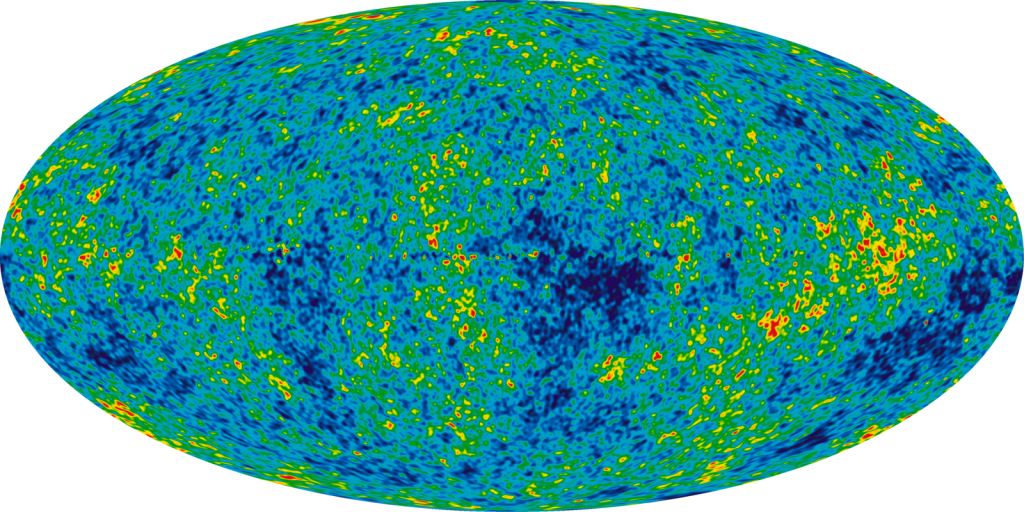By Sam Jarman
Ask just about any scientist, and they will tell you that the very best discoveries they can make are the ones which force us to change how we think about the world completely. That’s exactly what happened in 1923, when Edwin Hubble looked out at a small, hazy nebula from his mountaintop telescope in California.

Based on previous research by Henrietta Leavitt, Hubble was looking for Cepheid variable stars in the nebula, which would tell him exactly how far away it was. He managed to find a variable star easily enough, but it revealed a pretty big problem. The star showed Hubble that the nebula he was looking at was not even a nebula after all, but a vast cluster of stars situated very, very far away.
The distance was greater than any we had thought possible for thousands of years. For scientists, that meant that we needed to completely rethink our model for the structure of the universe. With the discovery of the Andromeda galaxy, the fundamental idea of billions of galaxies occupying a vast, ever-expanding universe was born. It was a lot for the world of astronomy to take in.
In the decades following Hubble’s discovery, theoretical physicists struggled to discern the scientific rules which could possibly govern such a newly colossal, mysterious universe. Some of their theories seemed promising, but In the meantime, the imaginations of the media and the public ran wild. If our understanding of the universe could be so shaken by one discovery like Hubble’s, they reasoned, what other revelations could be hiding in plain sight? And, of course, the biggest question: could intelligent life be out there somewhere?
Apprehension had grown strong by the 60s. Theoretical physicists had some convincing ideas about the nature of the universe, but at the time, technology just wasn’t sophisticated enough to prove experimentally which were correct, and which were misguided. Their ideas so often disagreed with each other that it seemed like no-one had really got anywhere at all. But change was coming. Improved telescopes meant that by 1964, mysterious signals, the likes of which would make or break previously speculative cosmological theories, began to come in.
A dodgy radio receiver?
Pigeons. It had to be. Since making their home in the cosy hovel that was the Holmdel Horn Antenna, the birds had been busy and painting the walls with the remains of their dinner, which was giving off who knows what kind of radiation. How else could radio astronomers Arno Penzias and Robert Woodrow Wilson explain the uniform, unwanted microwave signal, which wouldn’t go away no matter where in the sky they pointed the telescope?

The pair cleared out the avian intruders, and scrubbed the inner surface of the antenna clean. They checked the equipment thoroughly yet again, making sure the receiver was still cooled to just above absolute zero, minimising any interference from within the telescope. But still, the low, intense noise hindering their experiment persisted. Clearly, the radiation was originating from something more interesting than pigeon droppings. Something, they realised, beyond our own galaxy.
Coinciding with Penzias and Wilson’s predicament, a group of astrophysicists at Princeton University were working on a theory they believed could explain what was happening in the earliest moments of the universe’s existence. Based on earlier work by cosmologist Ralph Alpher, their idea hinged on the concept that the universe had all started with a rapid, high-energy expansion from a single point: a Big Bang. They proposed that if the Big Bang had really happened, it must have released a colossal surge of radiation, still observable to this day with the right equipment. The radiation would have cooled significantly by now, but if its remnants were detected, it would be definitive proof that the scientists’ notion was correct.
The idea was in direct conflict with the earlier-proposed Steady State theory, which suggested that the universe had no beginning, meaning no Big Bang, at all. Instead, the universe had existed for an eternity beforehand, and had never changed significantly. The two theories were radically different, and both appeared to have equal weight. But without any hard evidence, neither could be validated over the other. That all changed in 1964, when Penzias and Wilson caught word of the Princeton scientists’ research.

Through a friend, Penzias got access to a preview of the Princeton paper. What he read astounded him: using first principles, the astrophysicists had argued that a surge of electromagnetic radiation had permeated the entire universe following the Big Bang. As the universe expanded, so too did the wavelength of the radiation, until reaching its current wavelength of 7.35 cm. That was the very same radiation Penzias and Wilson had attributed to pigeon poop – almost exactly. The pair got in touch with the Princeton scientists as soon as they could.
The rest of the story is history. The two groups teamed up to publish not only a theory of how the Big Bang could have hypothetically played out, but indisputable experimental proof of the Big Bang itself on top of it. The Steady State theory had been disproved, and was consigned to history. In 1975, Penzias and Wilson earned a Nobel Prize for their ground-breaking discovery.
Decades later, the radiation observed for the first time by Penzias and Wilson – now known as Cosmic Background Radiation – has been studied in meticulous detail. It has been found to be incredibly uniform, but not perfectly so. In the very earliest moments of the universe, some regions emerged where matter was densely clumped together, whereas it was sparser in others. As the regions formed, the surge of radiation created by the Big Bang was slightly distorted by the clumps of matter.

Billions of years later, the denser regions have become areas abundant in galaxies, while the sparser regions are now vast, empty voids in space. The Cosmic Microwave Background has retained the distortion it underwent at the very start. By picking up the subtle variations in the radiation, we can now create maps of the structure of the universe with detail which must have been unthinkable just a few decades ago.
So from a mysterious error first attributed to pigeons with poor housekeeping skills, came another fundamental theory in cosmology. But the 60s weren’t over, and there were yet to be more discoveries which would prove to shake up our understanding of how the universe works. In 1967 came another bizarre signal, this time with a somewhat more exciting misguided idea about where it came from.















































